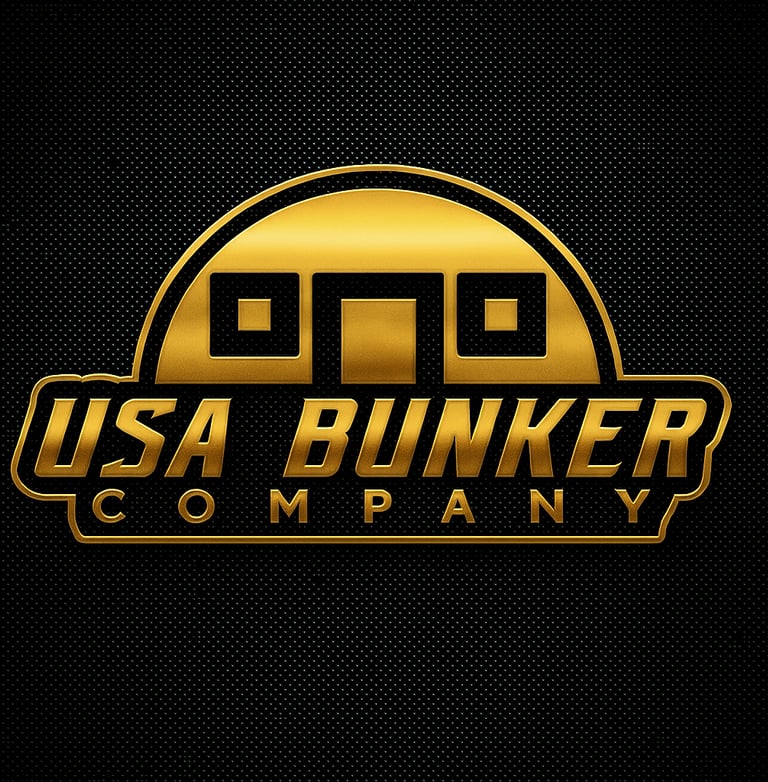Why Most Choose ICF:
ICF vs. Steel Bunker Construction – Thermal, Structural & Airtightness Comparison
With Hulk Systems Waterproofing & Air-Barrier Integration
Including USA Bunker Company’s R-38 ICF System
1. Thermal Performance (ICF Case-Study Backed)
Case Study ICF Walls (Industry Average):
- Guarded hot-box testing showed standard ICF systems (approx. R-22 to R-24) often outperform their rated R-values.
- Example: An R-23 ICF wall achieved R-23.36 in controlled testing.
- Thermal mass + continuous insulation keeps interior temperatures extremely stable.
- Industry-average ICF took 144 hours (6 days) to reach steady-state temperature.
USA Bunker Company ICF Walls (R-38 System):
- USA Bunker Company uses significantly higher performance ICF insulation (R-38).
- This provides a substantially higher thermal resistance than the systems tested in published studies.
- Results in even slower heat transfer, higher energy efficiency, and improved climate stability.
- Enhanced temperature retention allows bunkers to remain habitable longer during power loss or off-grid operation.
Steel Bunkers:
- Steel has no inherent insulation; loses heat rapidly.
- Steel is highly conductive, transferring exterior temperatures directly indoors.
- Requires heavy insulation, framed interiors, and vapor controls.
- Zero thermal mass → fast temperature swings.
Winner: USA Bunker Company’s R-38 ICF System
2. Airtightness & Contamination Control
ICF Bunkers:
- Lab studies show ICF structures average 1.26 ACH (air changes per hour), far below typical framed construction.
- EPS + reinforced concrete minimizes infiltration paths.
- Works exceptionally well with NBC air filtration systems.
Steel Bunkers:
- Steel shells may be airtight, but weld seams, bolt connections, and penetrations can leak.
- Soil pressure can flex steel, breaking sealant bonds.
- Requires ongoing maintenance to remain airtight.
Hulk Systems for USA Bunker Company ICF:
- Adds a monolithic, fully bonded waterproofing and air-barrier membrane.
- Creates a vault-grade sealed envelope with zero seams.
- High resistance to hydrostatic pressure and ground movement.
Winner: USA Bunker Company ICF + Hulk Systems
3. Waterproofing & Moisture Control
USA Bunker Company ICF + Hulk Systems:
- EPS + concrete core are naturally moisture resistant.
- Hulk Systems adds advanced elastomeric waterproofing.
- Zero corrosion risk.
- Eliminates condensation pockets common in metal structures.
Steel Bunkers:
- Steel is extremely prone to corrosion and condensation.
- Requires multi-layer waterproofing, corrosion coatings, and interior vapor control.
- Membrane failure can cause rapid steel degradation.
Winner: USA Bunker Company ICF + Hulk Systems
4. Structural Strength & Longevity
USA Bunker Company ICF:
- Reinforced concrete core handles extreme soil loads.
- 50–100+ year lifespan.
- Fireproof, mold-proof, pest-proof, and corrosion-proof.
Steel Bunkers:
- Structural performance depends entirely on steel thickness.
- Thin (1/4”–1/2”) steel can deform underground.
- Thick steel is expensive and still vulnerable to corrosion.
Winner: ICF Bunkers
5. Energy Efficiency & Off-Grid Survival
USA Bunker Company R-38 ICF:
- Highest thermal resistance of mainstream bunker systems.
- Requires smaller HVAC load.
- Better solar + battery performance due to ultra-low energy demand.
- Retains interior temperature better than steel during outages.
Steel Bunkers:
- High HVAC demand due to thermal conductivity.
- Rapid temperature gain/loss.
- Continuous condensation increases energy usage.
Winner: USA Bunker Company’s R-38 ICF
Overall Conclusion:
ICF paired with Hulk Systems creates a best-in-class bunker envelope with unmatched thermal performance, moisture protection, structural longevity, and airtightness. USA Bunker Company’s upgraded R-38 ICF system surpasses the industry averages used in published studies, offering superior performance and long-term resilience compared to steel bunker construction.
References:
- “Lab Notes: Thermal Performance of ICF Walls.” Insulated Concrete Forms Manufacturers Association (ICFMA), 2020.
- “Thermal Study: ICF Wall Energy Savings,” ICFMA, 2017.
- Wilcox, B.A., & Van Geem, M. “Thermal Mass Factors for ICF Walls,” ORNL, 1998.
- HULK Systems Waterproofing Specification Guide, 2022.
- HULK Systems ICF Block System Overview.

